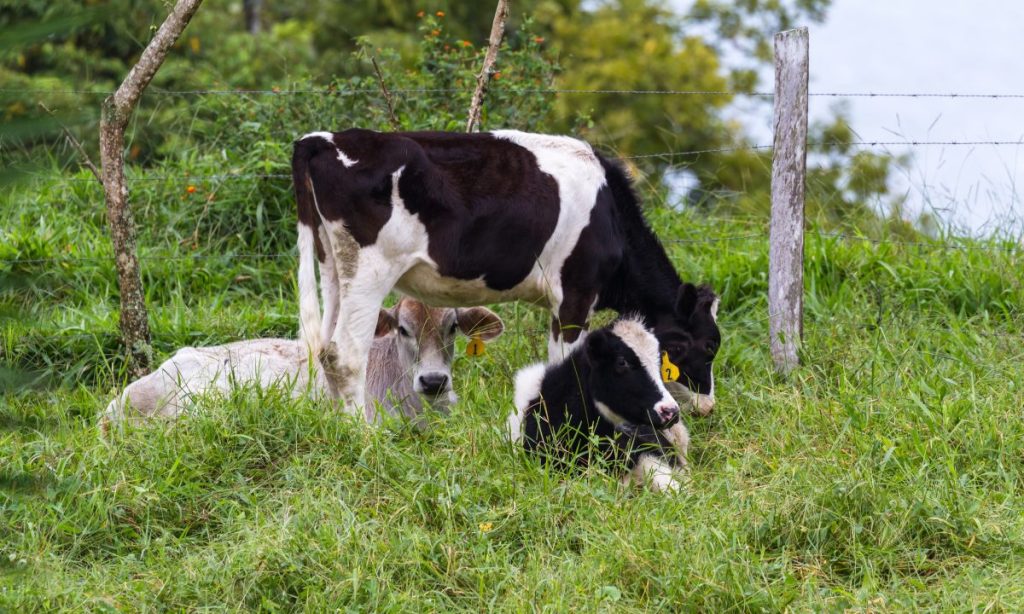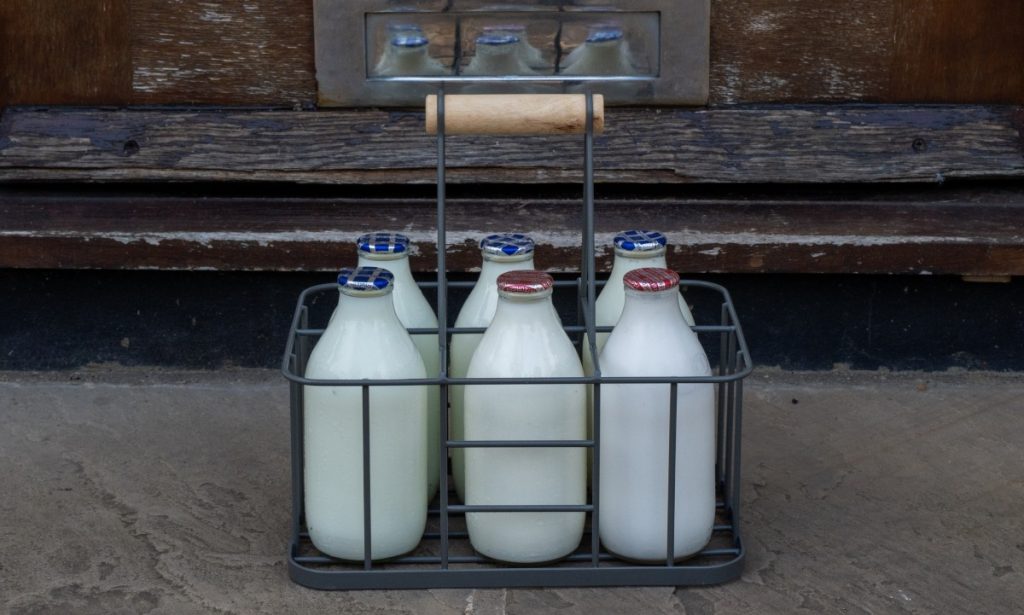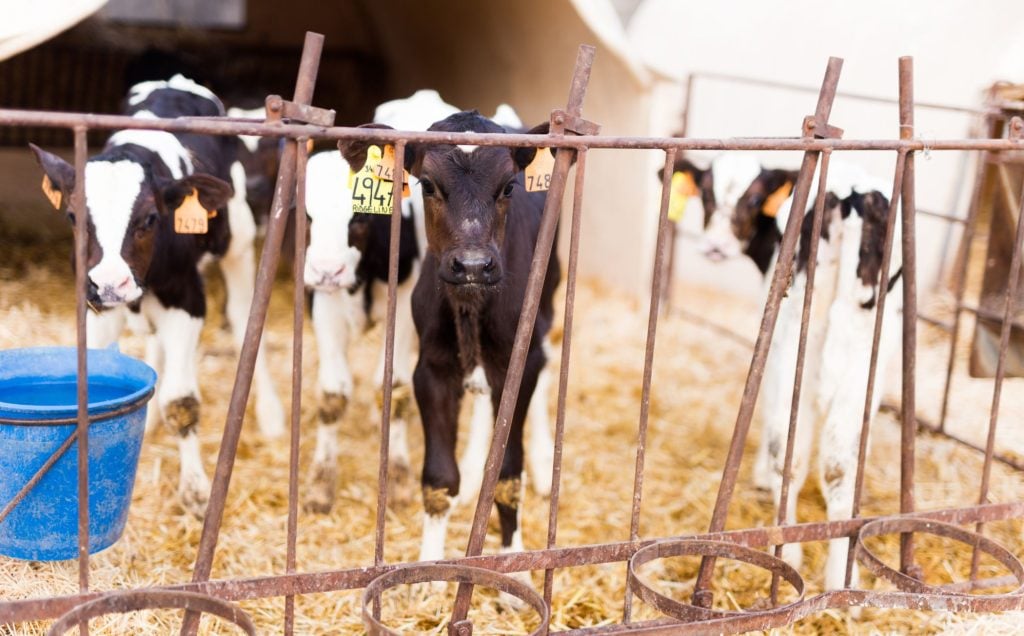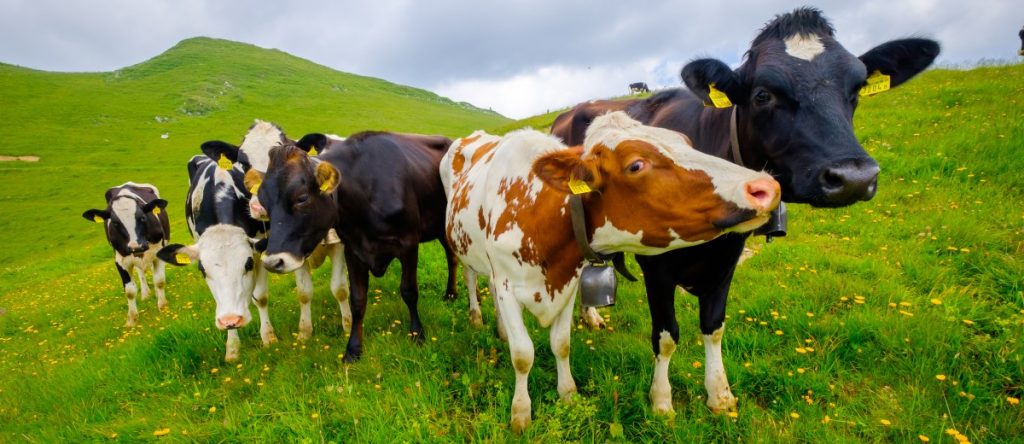If you have some experience working with livestock and are ready to put in the time and effort, a microdairy can be an excellent way to boost your income — not to mention supplement your family’s diet.
Let’s explore the ins and outs of starting a microdairy for profit:
What Is a Microdairy?
A microdairy is a small dairy business that produces milk, cheese, yogurt, and other dairy products.
These businesses are unique in that they are typically operated on a smaller scale than traditional dairy farms. It’s not uncommon to see a microdairy with just three to five cows.
Shockingly, just a few cows can still produce up to 20 gallons of milk per day!
This form of agriculture offers the opportunity for people to produce their own food on a small scale in a way that makes economic and environmental sense.
As a microdairy owner, you get to enjoy the benefits of producing your own food and knowing exactly where it comes from.

How Much Money Can You Make From a Microdairy?
Microdairies can make $6 – $10 a gallon right from their farm, or they can sell their products to distributors for up to $15/gallon.
That’s a lot of money for something that you can make in your backyard!
Annually, you can expect to make $4,500-$10,000 on just five acres, which makes starting a small-scale dairy operation a very lucrative idea to consider if you want to get off the grid.
Marketing and Selling Your Dairy Products
There are two main ways to sell your dairy products: sell directly to consumers through farmer’s markets, restaurants, and stores; or sell to a distributor who markets the products for you.
Selling through a distributor means that someone else is handling all of the marketing and distribution aspects of the business.
It usually saves you a lot of time and results in better profit margins.
This is because the distributor is buying your products in bulk and will sell them at a wholesale price, which will result in a higher profit margin for you.
Plus, since you don’t have to worry about marketing your products or distributing them yourself, you can focus all of your attention on producing high-quality milk and products!
Selling milk directly to consumers can be very profitable, but can be difficult and time-consuming.
It typically requires that you have your own website and market your milk products on your own through social media and other means.
You’ll also need to set up a delivery system (such as a pick-up location or a delivery service) so that you can get your products to your customers regularly.
If you’re willing to put in the time and effort required to sell directly to your customers, it can be a great way to make money from your microdairy.

Value-Added Dairy Products
Value-added dairy products are milk products that have been processed or modified in some way (e.g., yogurt, cheese, and butter).
These products can increase your profits because they’re higher in price than plain dairy products.
Plus, they contain more nutrients and other healthy ingredients that can boost sales and increase the popularity of your brand.
Value-added dairy products can be sold directly to consumers or to retailers.
One great benefit of value-added dairy products is that they often taste better than their plain counterparts so customers will be more likely to buy them.
There are some different types of value-added dairy products that you can produce and sell at your microdairy:
- Flavored milk is milk that has been combined with sugar, flavoring, and sometimes food-grade coloring to give it a unique flavor.
- Buttermilk is an acidic dairy product that can be produced by adding lactic acid bacteria to low-fat or skim milk to break down the lactose (milk sugar) into lactic acid.
Buttermilk is acidic in taste, so it is often flavored with sweeteners such as sugar or honey.
- Yogurt is a dairy product made by fermenting milk with live cultures of bacteria and yeasts.
Like buttermilk, yogurt is also typically flavored with sweeteners and sugar to improve its taste.
Additional value-added products include cheese, cottage cheese, ice cream, greek yogurt, sour cream and cream cheese.
You can also sell different types of milk, like:
- Ultra-filtered milk: yogurts are made with ultra-filtered milk, which has 99% of the protein removed compared to normal whole milk.
Ultra-filtering means that you can market this product to people who are interested in lower protein and fat intake. This type of milk is particularly popular for use in weight loss diets.
- Lactose-free milk: this milk is produced by eliminating all lactose in the milk through an enzyme treatment process, making it suitable for people with lactose intolerance or allergies.
- Homogenized milk: this is milk that’s been treated to ensure the breakup of the fat globules such that they appear smaller and disperse evenly throughout the liquid.
This treatment alters the texture of the final product as compared to untreated milk.
- Pasteurized milk: milk that has been heated to kill potentially harmful microorganisms.
- Raw milk is sold unprocessed; pasteurized milk has been processed to eliminate these microorganisms.

Pricing Your Dairy Products
Dairy products are priced based on the product type (e.g. whole milk vs. non-fat milk), the volume purchased (in gallons), and the size of the package.
As a start-up business, it’s important that you set prices based on your cost structure and your desired profit margin.
Selling your dairy products at a wholesale price is an effective way to minimize your cost of goods sold and maximize your profit margin.
You can sell your products directly to grocery stores, distributors, or specialty shops.
Wholesale pricing for milk is calculated by multiplying the wholesale price by 2.4 to determine the retail price per pound.
For example, a dairy product that sells for $3.00 per pound at wholesale would cost $6.80 per pound at retail.
Using this formula, you can determine the retail price for your dairy products based on how much you are selling the product for wholesale.
In the United States, the Dairy Pricing Program (DPP) is designed to remove some of the uncertainty in milk pricing.
This program sets the price of Grade A nonfat dry milk and cheese every week. The DPP also sets minimum selling prices for Grade A milk and cream.
These prices are updated weekly and published online by the United States Department of Agriculture (USDA).
The DPP prices are based on the wholesale price of dairy commodities like butter, whole milk powder or cheese.

The Right Conditions for a Microdairy
If the conditions on your land are suitable for dairy cows, and you have the space to house the animals, then you are ready to start your own microdairy!
Dairy cows require ample amounts of fresh, clean, water. They need to eat a diet of grass, hay, and grain. They also need shelter from weather, and protection from predators.
Animals will need adequate housing that protects them from cold, rain, and other outdoor elements.
It is important to provide animals with a clean, comfortable environment that is free of disease and pests.
Additionally, you will need to have proper ventilation and lighting in the barn to provide a comfortable temperature for the cows.
You will need the appropriate equipment to keep your animals healthy. This includes a barn equipped with adequate stalls and a milking parlor. You will also require bedding and feed.
The most important thing is that you are comfortable around your animals at all times.
Understanding the proper way to care for your animals is an important part of maintaining a healthy and successful microdairy.

Starting a Microdairy
Before buying a piece of land, consider your business model. If you plan to sell your dairy products directly from your farm, you need to be in a location that’s easy for customers to get to.
If you plan to sell your products from a market or convenience store, you may not need a location that is easily accessible to customers.
You should also decide whether you want to buy an existing dairy operation or build your own facility from scratch.
Some lenders offer loans for microdairies. Check with your local lender to find out if they offer financing programs for this type of business.
In addition, several agricultural organizations also offer loans to farmers.
If you’re in the United States, these organizations include USDA’s Farm Service Agency, the Natural Resources Conservation Service and the Farmers Home Administration.
If your lender won’t consider your loan application, find an institution that will lend money to a farm start-up.
Animal Husbandry Regulations and Standards vary from state to state. Many states require licenses and permits to start a small dairy farm.
You also may need approval from local governments if your farm is in a residential area or near certain resources like forests or water bodies.
For a step-by-step explanation of starting a microdairy, visit our article on the topic.
Final Thoughts
Starting a microdairy is a large commitment. Be sure that you’ve had experience working with animals and selling goods before starting your dairy.
If you do decide to invest in starting your own microdairy, it can be a lucrative and fulfilling career or “side gig.” For more ideas about farming for profit, visit our Homesteading Hub.
